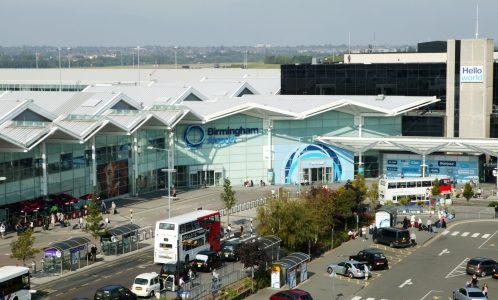The debate over air capacity in London and the South East of England remains one of the major talking points in the UK aviation business alongside Air Passenger Duty (APD). This weekend former Conservative Transport Minister, Steven Norris added to the debate claiming that Stansted Airport was “the least worst option”. He even suggested that the current coalition government should dust off the old RUCATSE (Runway Capacity in the South East) report from 20 years ago. “No-one would notice because nothing has changed, neither under the last Tory government nor under thirteen years of Labour,” he said.
We have been debating about future growth opportunities at London Heathrow, new runways at London Gatwick or London Stansted and even the concept of a whole new hub airport in the Thames Estuary since around the early 1970s. The problem then, as now, is very simple. No new runway anywhere in the south east will be unopposed. According to Steven Norris, all the choices are tough, “ranging from impossibly tough to just very,” he explained. “Every time the subject has been raised the same evidence has been scrutinised by a new group of ministers and then put carefully back in its box. At a time when economic growth is not just nice to have but a vital necessity it is right to look yet again at the options and this time, make a firm decision,” he added
The options will always split debate. Many will argue that a single hub airport is vital to Britian's competitiveness and that the only place for it is Heathrow. The importance of a hub airport is key to the success of many air routes and discussions with airlines across the world about air services shows clearly just how important that is. China Southern Airlines recently launched flights to London Heathrow from Guangzhou after eight years trying to get slots. It could have started earlier with flights to Gatwick or even Stansted but believed these options would not be viable without the transfer traffic at Heathrow.
Is London Gatwick, now under private equity ownership, the answer? Under an existing County Council agreement no formal application can be made until the end of this decade but the recent Masterplan of the airport suggests that another Runway could be on the cards in the future. This too will be a difficult sell, not least due to the number of listed buildings in the vicinity of the airport.
The case for the new Thames Estuary Hub, dubbed Boris Island after being trumpeted by London Mayor Boris Johnson, is compelling and looks perfect on paper. However, in tough economic times it will need a significant investment, estimated to be up to £100 billion, it will cause airspace operational difficulties and could only be justified with the closure of Heathrow, a logical move but something respected aviation executives have discounted as unthinkable.
So what of Steven Norris’ view that Stansted is “the least worst option”. Well, the current poor ground access could be improved with more efficient road and rail links and there is scope to expand around the airport. “If there has to be a new runway and perhaps another in a decade's time, then the least worst option is Stansted,” says Norris. The problem would be selling this to the airlines.

Whatever the outcome to these ongoing discussions it could be years, even decades before any new Runway capacity is available in the South East of England. So what is the short-term solution? Well, according to Paul Kehoe, Chief Executive Officer, Birmingham Airport better use of regional airports across the country could be the answer with the new runway extension at the Midlands’ airport potentially taking some of the strain away from the already overloaded London airport system.
Speaking to The HUB earlier this week he highlighted Birmingham Airport’s stand on the London capacity debate. “Why take the long process of building a new airport when we already have one that is a little over an hour from London. We should fully utilize the existing capacity that major airports like Birmingham Airport have now. Heathrow isn’t the only way to fly to new markets and we need to balance Britain’s aviation policy,” he said.
According to Kehoe the UK's aviation strategy is too focused on the South East - whether Heathrow should have a third runway or whether there should be a new airport in the Thames Estuary. “These solutions are years away,” he rightfully noted suggesting that the classification of a number of UK regional airports as ‘National Airports’ could help alleviate the problem.
“At Birmingham Airport, we think the answer is really quite straightforward. We should fully utilise the existing capacity that major UK airports, like Birmingham Airport, have now. We should have a series of strategic national airports spread across the UK - and not just in the South East - because it is better for customers and better for business,” Kehoe added.
It is quite clear that while London Heathrow is at 99 per cent capacity, other national airports have the spare capacity to provide a rapid and cost-effective solution to the aviation gap. Birmingham Airport currently handles nine million passengers a year, a figure that could double without any new infrastructure. However, with its runway extension, due for completion in 2014, it will have spare capacity for over 27 million passengers. That is actually a larger increase in capacity than a third runway at Heathrow could deliver a decade down the line.
The runway extension will provide an additional 403m of operational length and according to Kehoe this will buy it between 2,000 and 2,500 miles of additional range. “The longer runway will enable Birmingham Airport to offer longer-haul flights to all popular destinations, and progressively increase passenger volumes to 36 million passengers per year. It is possible that the new generation of aircraft - such as the Boeing 787 and Airbus A350 - might be able to reach Australia non-stop from Birmingham,” he said.
“Birmingham Airport could make a major contribution to meeting air passenger demand immediately. In 2011, 3.3 million passengers from the Midlands travelled to airports in the South East. By ‘clawing back’ passengers to the Midlands, Birmingham Airport could help to release capacity at airports in the South East, so that they can serve the South East,” Kehoe added.
Birmingham Airport is currently working on an aggressive route development strategy as it seeks to develop new links particularly into emerging markets in Asia and the Indian sub-continent. “The capacity issues at Heathrow mean we have become a more attractive proposition to airlines. We are currently losing a lot of traffic to the London area or flying locally via other hubs. The latter means that Birmingham Airport is still securing the traffic but we will have the opportunity in the future for passengers to be able to fly directly, a much better offering,” explained Kehoe.
According to the airport executive it is all about passenger choice. Key targets are the big Chinese gateways like Beijing and Shanghai which are already served from London but also some of the emerging regional cities in the country that would not necessarily be able to secure direct links to Heathrow and which could easily be supported by the strong business links across the Midlands’. According to Kehoe, Pune in India is one niche market that would probably be better suited to operate from Birmingham rater than London due to the automotive links in the Midlands, while data shows that the Thai capital Bangkok shows particularly high traffic flows from the region.
Birmingham Airport seems to have already secured an important new airline partner in the form of Qatar Airways, which revealed last month that it is planning to launch flights from its Doha International Airport hub as part of a planned network growth in the UK. “The timing of this announcement took us a little by surprise, but we are absolutely delighted to see quality carriers like Qatar Airways endorsing our product by announcing its intent to serve Birmingham,” explained Kehoe.

The airport is also focused on developing its network across short- and medium-haul markets. “We currently have operators at Birmingham Airport that can be classified into five classes: long-haul full-service, short-haul full-service, charter (which continues to perform really strongly), the hardcore low-cost carrier and the new hybrid model offering low-fares with customised customer service options. This helps us to negotiate with airlines. It can be tough though in some markets, particularly with low-cost carriers as we are not a low-cost airport and nor do we intend to be,” Kehoe said.
Enhanced connectivity into North America is also a target for Birmingham Airport and the airport’s CEO highlights Toronto and Chicago as the main targets. The Canadian city is currently served on a seasonal basis having been flown previously by Air India as an extension of its flights from India. “There is a large Indian community in Toronto that could support a Birmingham – Toronto link. It would be great if we could get somebody like Air Canada to fly this route and connect into its Star Alliance partners here,” said Kehoe. Meanwhile, Chicago has the support of the business community, according to the executive with a number of corporates able to support the route, including Derby-based Rolls Royce which has strong links with Chicago-headquartered Boeing.
The arrival of new long-range aircraft such as the Boeing 787 and Airbus A350 will certainly lead to a fragmentation of the global aviation business allowing new city pairs like these to be introduced that maybe couldn’t be sustained previously with older aircraft types. We have already seen this occurring with the debut of the 787 and the new routes that All Nippon Airlines, Japan Airlines and United Airlines have announced.
If Britain fails to embrace this trend, it risks placing all its eggs in one basket and creating an aviation industry without the flexibility and resilience to react to changes as and when they arise. Non-stop flights from regional airports that bypass hubs would enable Heathrow to manage its limited capacity more effectively, while continuing to offer passengers the widest possible selection of departure times and non-stop destinations,” concluded Kehoe.





